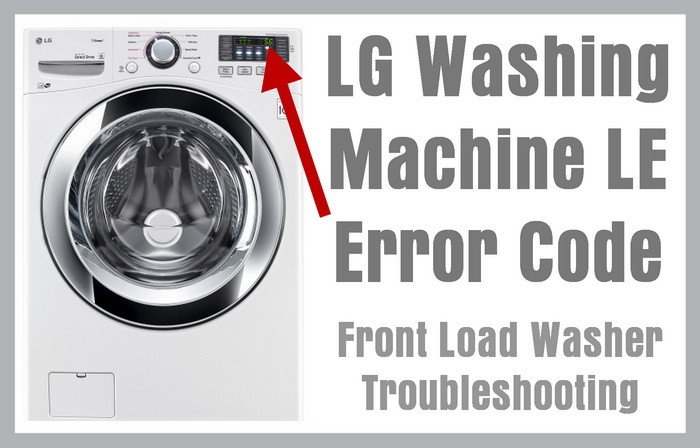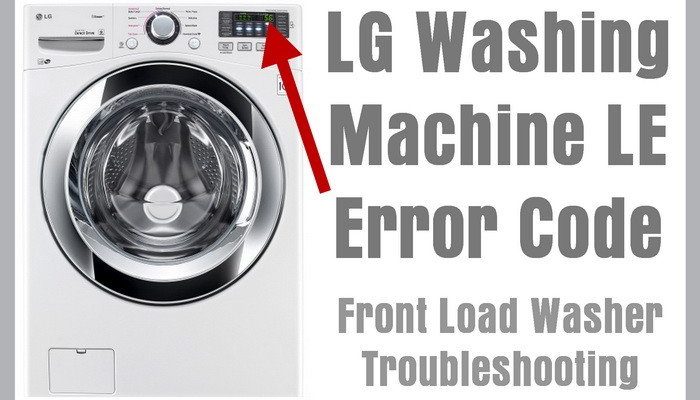
Now, you might think, “Is this something I can ignore and just keep washing my clothes?” Well, let’s dive into what error code F1 actually means and whether it’s something you can just brush off, or if it’s a signal that needs your attention.
What Does Error Code F1 Mean?
First things first, let’s decode this so-called error. In an LG washing machine, an error code F1 usually indicates a problem with the water level sensor. Think of this sensor as a referee in a soccer game; it keeps track of how much water is needed for each wash cycle and ensures everything runs smoothly. If this sensor isn’t working correctly, it means the machine might not know when to stop filling or draining, leading to potential inefficiencies or even flooding.
So why does this happen? There are a few common reasons. Sometimes, it could be a glitch in the machine’s system that temporarily confuses the sensor. Other times, it might be due to a buildup of debris or limescale that affects the sensor’s ability to function properly. Imagine if your glasses were smudged; you’d struggle to see clearly, just like the sensor struggles to gauge the water level accurately.
In some cases, the sensor itself might be faulty. Like any piece of technology, wear and tear can take its toll. Knowing these could help you decide your next steps and whether professional help is needed.
Is It Safe to Ignore the F1 Error?
Here’s the deal: ignoring an F1 error is generally **not** a good idea. Let’s consider why. If your water level sensor isn’t working correctly, your washing machine might overfill or underfill. Overfilling can lead to water spillage and damage to your floor or nearby furniture. Think of it like leaving a full bathtub running; eventually, it overflows, causing a mess you weren’t prepared for.
On the other hand, if there’s not enough water, your clothes won’t get cleaned properly, and you might find detergent residue left behind. It’s like trying to wash dishes with just a drop of water; you won’t get the desired result. These issues can become costly in terms of repairs or replacements, not to mention the potential waste of water and energy.
In some rare cases, ignoring this error could even lead to more significant electrical issues within the machine. So, while it might seem tempting to overlook a single error code, understanding the potential repercussions gives you a clearer picture of why addressing it is wiser.
How to Address the F1 Error
So, you’ve decided not to ignore it—good choice! Now, let’s explore what you can actually do. First, consider performing a reset. Unplug your washing machine for about ten minutes, then plug it back in. It’s a bit like rebooting your smartphone when it’s acting funny. This simple reset can sometimes clear minor glitches that might have caused the F1 error.
If that doesn’t work, inspect the machine’s water inlet valves and the related hoses. These could have blockages or kinks that prevent them from working correctly. Imagine trying to drink through a straw with a knot in it; frustrating, right? Ensure they are clear and functioning.
If the problem persists, it may be time to consult the owner’s manual or reach out to LG customer service. They can offer specific guidance or recommend scheduling a repair. In the meantime, keep an eye on your machine during cycles to ensure it’s not overfilling or underfilling, which can help prevent immediate issues.
Prevention Tips for the Future
To avoid running into the error code F1 again, consider implementing a few preventative measures. Regular maintenance goes a long way. Every now and then, clean the detergent dispenser and run an empty cycle with a washing machine cleaner. This helps remove buildup and keeps things running smoothly.
Check your hoses and filters every couple of months to ensure there are no blockages or wear-and-tear issues. It’s a bit like checking your car’s oil; a little attention now can save you from headaches later.
Last but not least, always follow the manufacturer’s instructions for load sizes and detergent types. Overloading can strain your machine, leading to errors. By keeping these tips in mind, you’ll enhance the longevity of your appliance and ensure that laundry day is hassle-free.
In conclusion, while it might be tempting to ignore that pesky F1 error, responding to it promptly and wisely ensures your machine stays in top shape, and your clothes come out clean every time.
